PROJECT OVERVIEW
The Problem
People who have the highest risk for suicide have the most disrupted sleep.
The standard suicide prevention protocol in inpatient mental health settings is to conduct safety checks (Q-15 checks) at routine intervals even throughout the night. By disrupting sleep, in-person safety checks exacerbate the problem they are meant to solve.
THE GOAL
We want to investigate how nurses conduct nocturnal inpatient safety checks, so that we can develop an intuitive remote monitoring solution that meets their needs.
USER RESEARCH
We conducted interviews with users (inpatient mental health professionals including nurses, mental health associates, clinicians, and researchers) to understand their pain points related to Q-15 checks.
PAIN POINTS
"Q-15 checks are as high touch as it gets - they can be very intrusive for the patient."
"Research shows that Q-15 checks decrease sleep quality which, in turn, increases suicide risk."
"Q-15 checks leave an unchecked window of time where a patient's safety status is unknown."
We defined goals for our solution based on identified user pain points.
PROJECT GOALS
"Minimize unnecessary interventions and give patients more independence."
"Reduce sleep disruptions. A physical safety check would not be needed if we knew the patient was safe without having to enter their rooms."
"Be able to alert nursing staff to a change of a patient's safety status with continuous, real-time monitoring."
STARTING THE DESIGN
DIGITAL WIREFRAMES
Our solution is a real-time, wearable-based remote patient monitoring application that will stream a patient's safety status continuously to a tablet on the nurses' station. This can mitigate unnecessary sleep disruptions by digitizing Q-15/nocturnal safety checks. If a patient is sleeping, there is no need to enter their room and wake them up.
In my initial wireframes, I drew on user research to create a list of necessary features for the design: wearable information (connection status, device battery, device ID), patient information (ID, room number, name, unit, photo), safety status (awake/asleep, in bed/out of bed), vitals, alerts. I also drew on my understanding of hospital telemetry monitoring to brainstorm ideas for two main views (a patient profile and a unit dashboard).
REAL-TIME WEARABLE-BASED REMOTE PATIENT MONITORING FRAMEWORK
REFINING THE DESIGN


ALERT OVERLAYS
LOG DIGITAL Q-15 CHECK
Every 15 minutes, the user will be prompted to log a "digital" Q-15 check of the patient's safety status as measured by the wearable device.
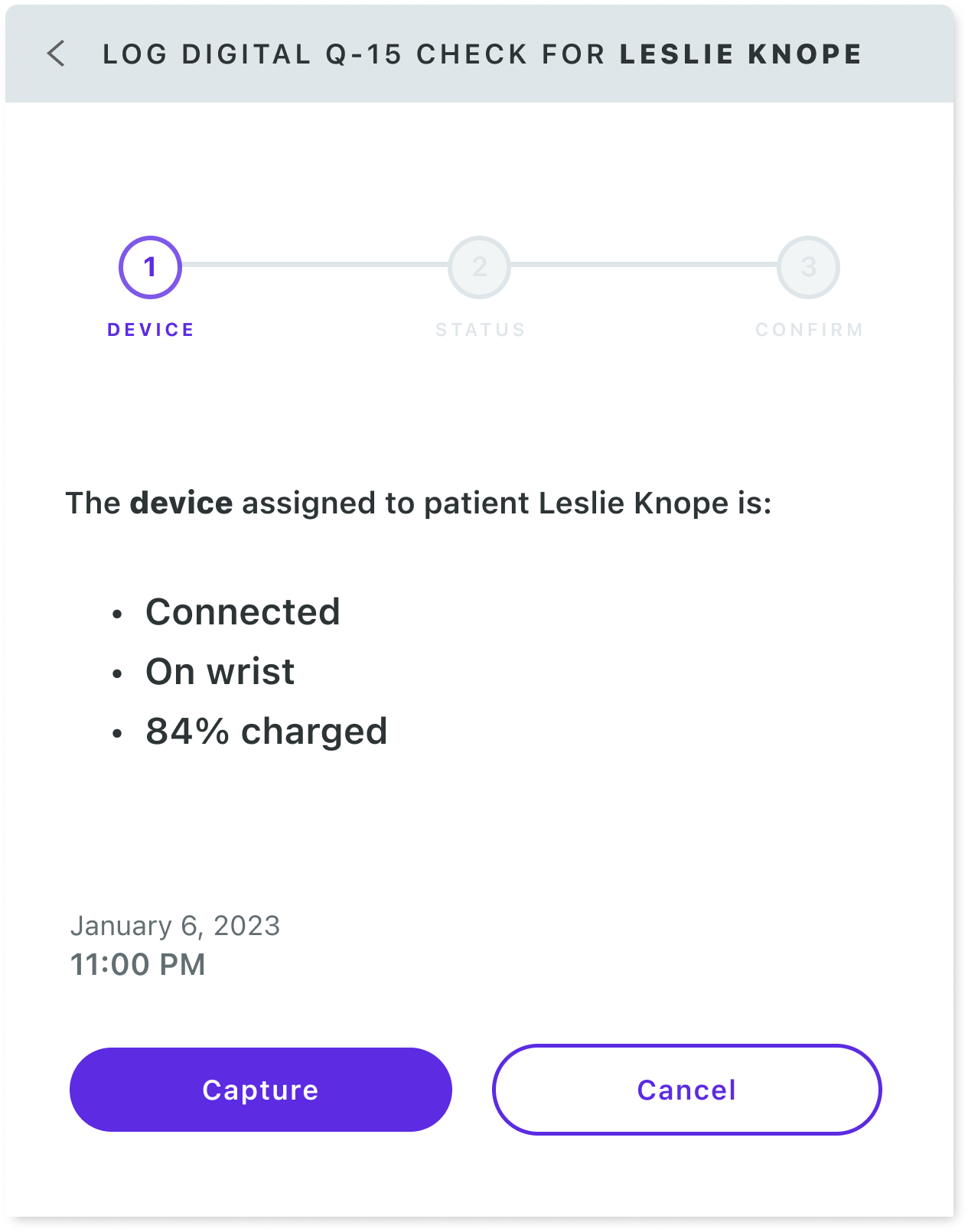

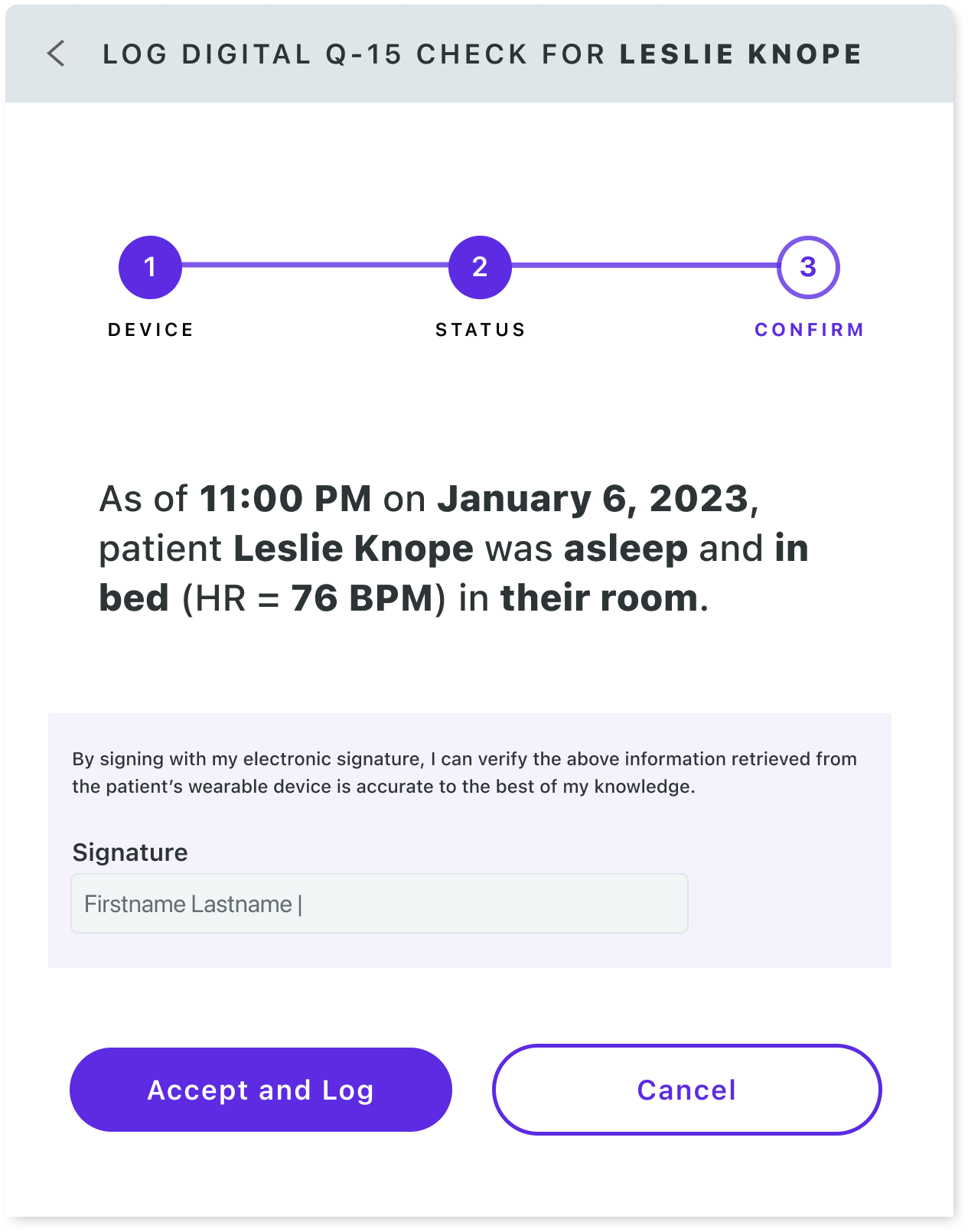
CONFIRM SAFETY STATUS
When a patient safety status alert is received, user will need to verify and log the patient's safety to dismiss the alert.
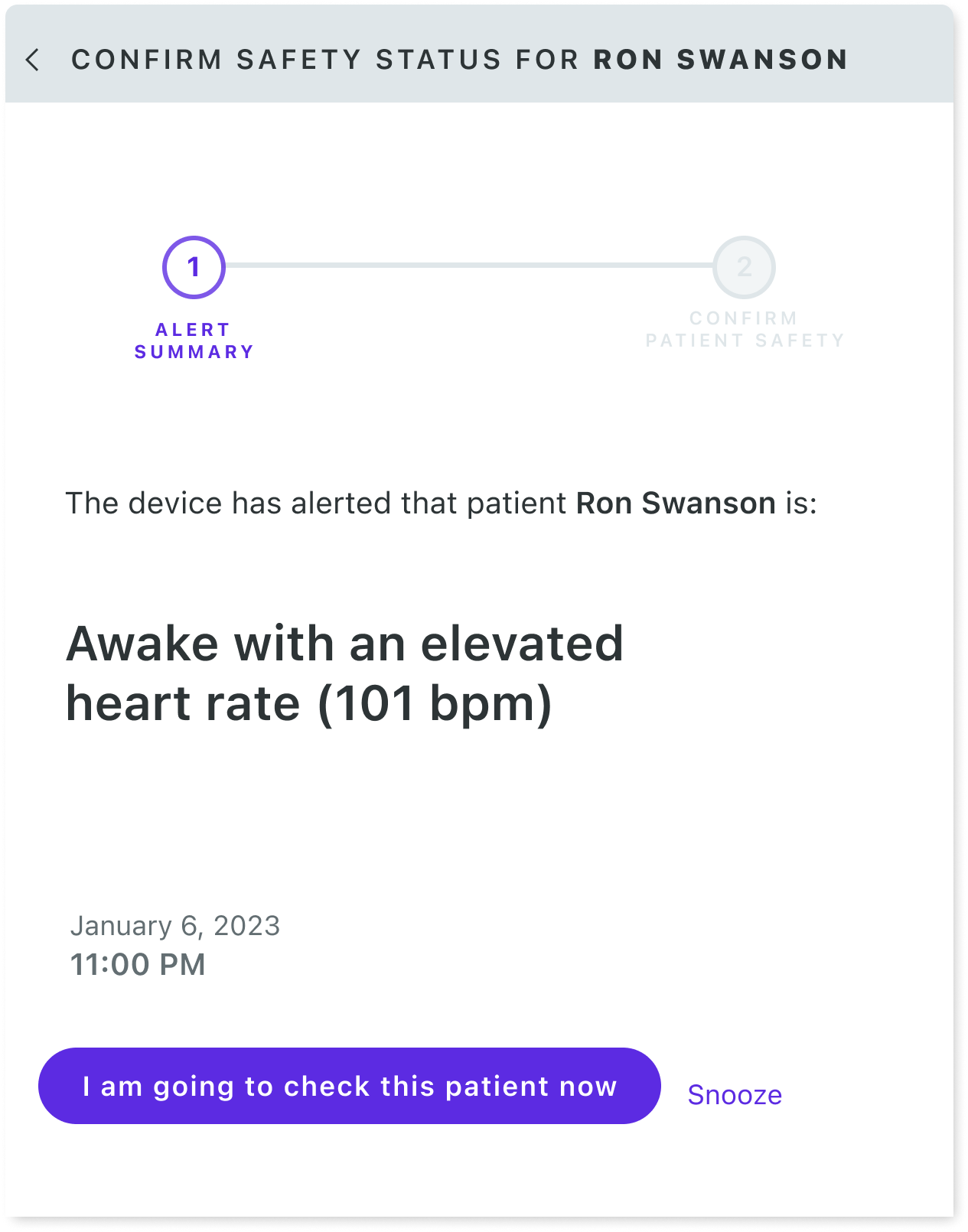
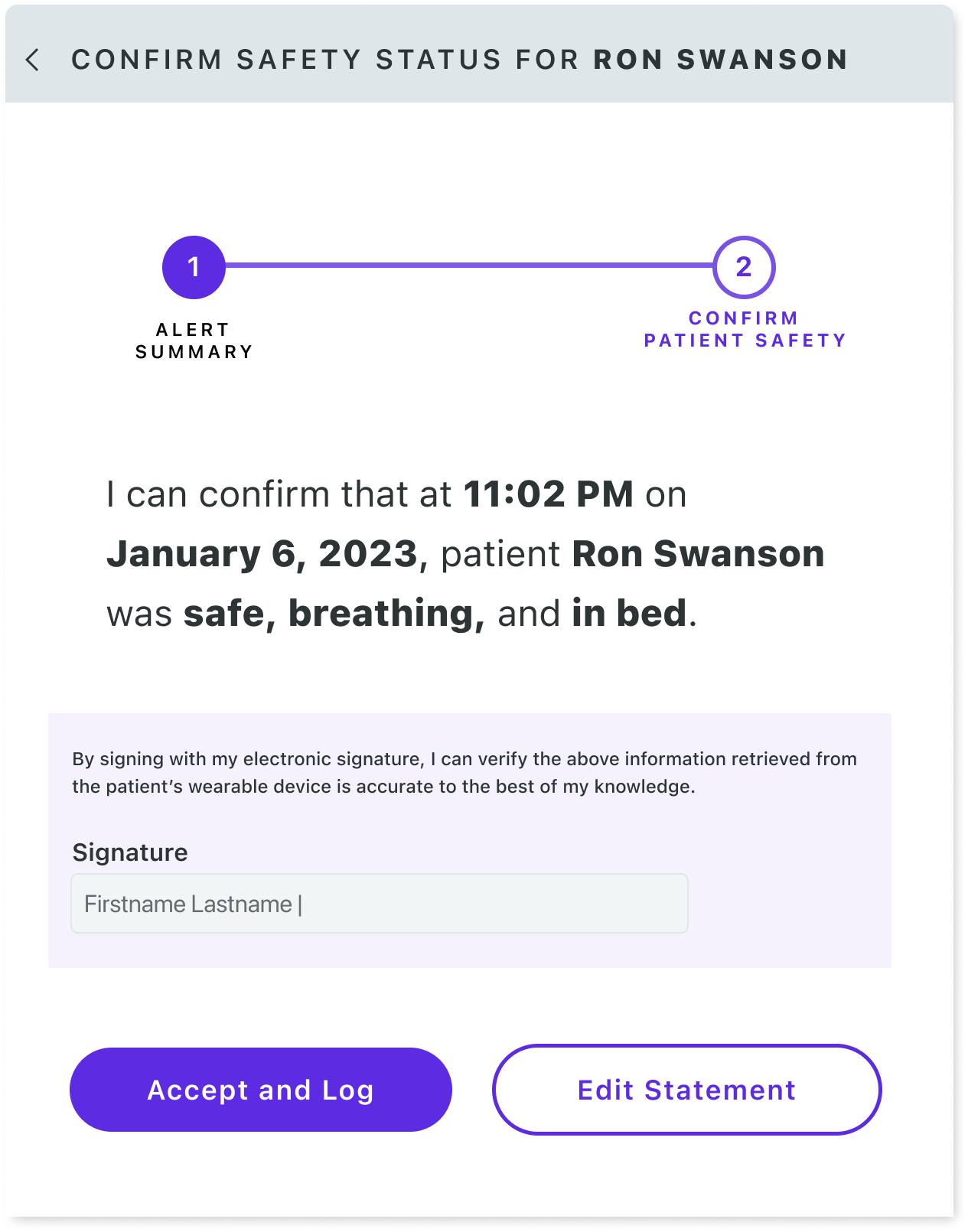
LOG DIGITAL Q-15 CHECK
Every 15 minutes, the user will be prompted to log a "digital" Q-15 check of the patient's safety status as measured by the wearable device.


USABILITY STUDY
TASK #1: Enroll a new patient and assign a device.
100% TASK COMPLETION
Suggestions/comments
•Add Precautions: Aggression, 1:1, Other/Text Entry
•Add Precautions: Aggression, 1:1, Other/Text Entry
Observations
•You could not select multiple precautions
•You cannot proceed until you enter all fields and the episode number was hard to locate
•All information was not displaying on the confirmation page (you need to know what you’re confirming)
TASK #2: Dismiss an alert by confirming patient safety status.
100% TASK COMPLETION
Suggestions/comments
•Add sound to the safety alerts (urgent alerts: heart rate, device removed)
•Add default options for common patient states (pacing, in bathroom, etc) to select when you observe in-person
•Add a more obvious text entry/edit icon
Observations
•The alerts were not populating in the notification center consistently
•Participants liked the idea of locking down the screen and forcing a response to a single alert
•Alerts were flashing on and off (latency issue)
•Add sound to the safety alerts (urgent alerts: heart rate, device removed)
•Add default options for common patient states (pacing, in bathroom, etc) to select when you observe in-person
•Add a more obvious text entry/edit icon
Observations
•The alerts were not populating in the notification center consistently
•Participants liked the idea of locking down the screen and forcing a response to a single alert
•Alerts were flashing on and off (latency issue)
TASK #3: Dismiss multiple alerts by confirming patient safety status.
100% TASK COMPLETION
Suggestions/comments
•Each alert should be prioritized
•Prioritization from high to low: device removed*, HR low*, HR high*, out of bed, awake, device disconnected, low battery, digital Q-15 check due (*sound alert)
Observations
•Dismissing multiple alerts was much easier from the notification center
•Each alert should be prioritized
•Prioritization from high to low: device removed*, HR low*, HR high*, out of bed, awake, device disconnected, low battery, digital Q-15 check due (*sound alert)
Observations
•Dismissing multiple alerts was much easier from the notification center
TASK #4: Dismiss an alert by logging a digital Q-15 check.
100% TASK COMPLETION
Suggestions/comments
•Rounding groups are unnecessary. MHAs typically split the unit (one takes one side and the other takes the opposite), and it would be better to receive alerts all at once because they Q-15 checks are not done at exact 15 minute intervals
•There should not be a sound/alarm for digital Q-15 checks otherwise the staff will become desensitized to it
•Rounding groups are unnecessary. MHAs typically split the unit (one takes one side and the other takes the opposite), and it would be better to receive alerts all at once because they Q-15 checks are not done at exact 15 minute intervals
•There should not be a sound/alarm for digital Q-15 checks otherwise the staff will become desensitized to it
GOING FORWARD
IMPACT
My work on the Nightingale Sleep project, where I served as the primary designer and researcher, enhanced my skills in UX design and research. The ongoing deployment of this solution across various mental health care environments showcases my ability to contribute to impactful, real-world applications.

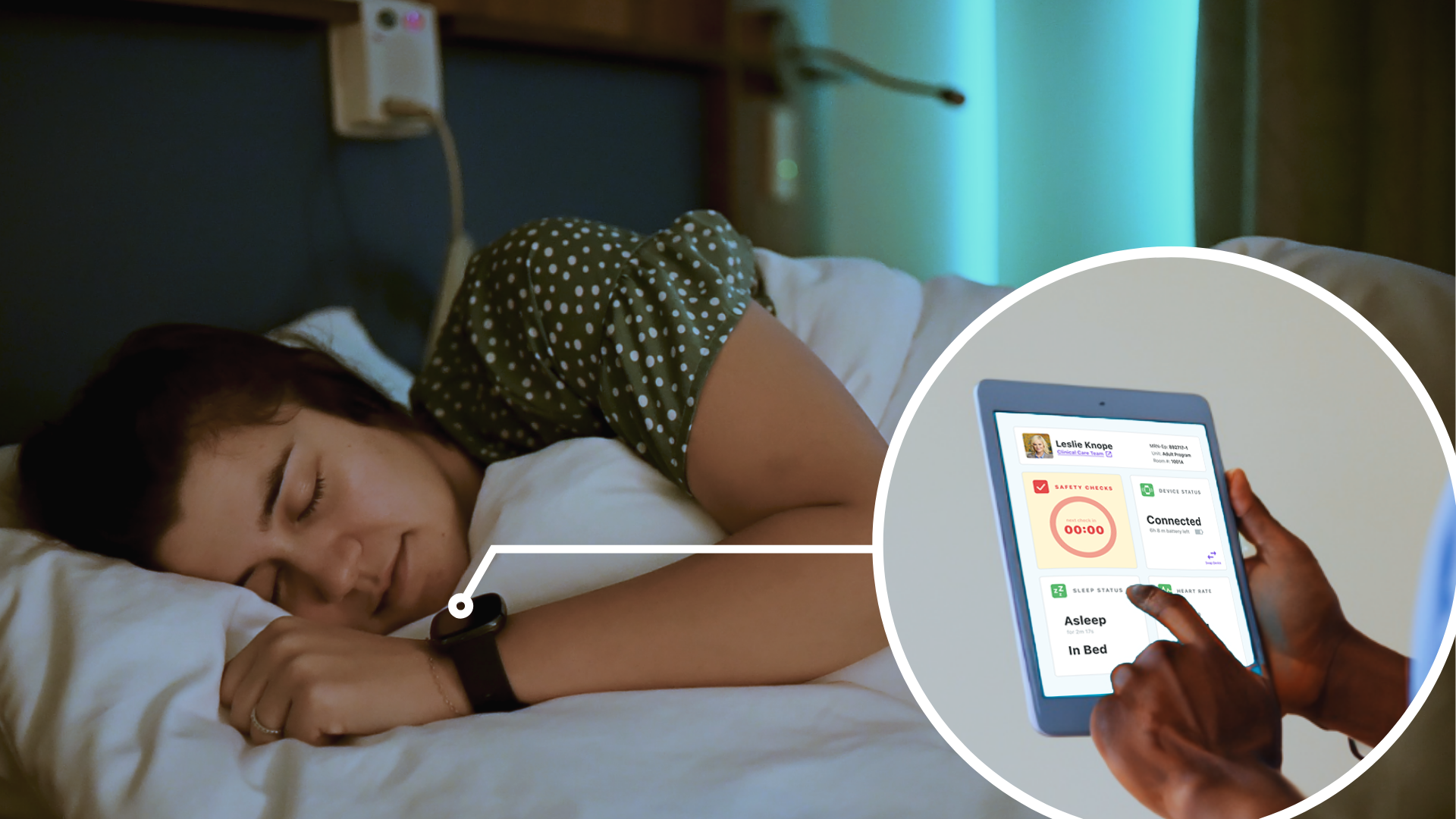

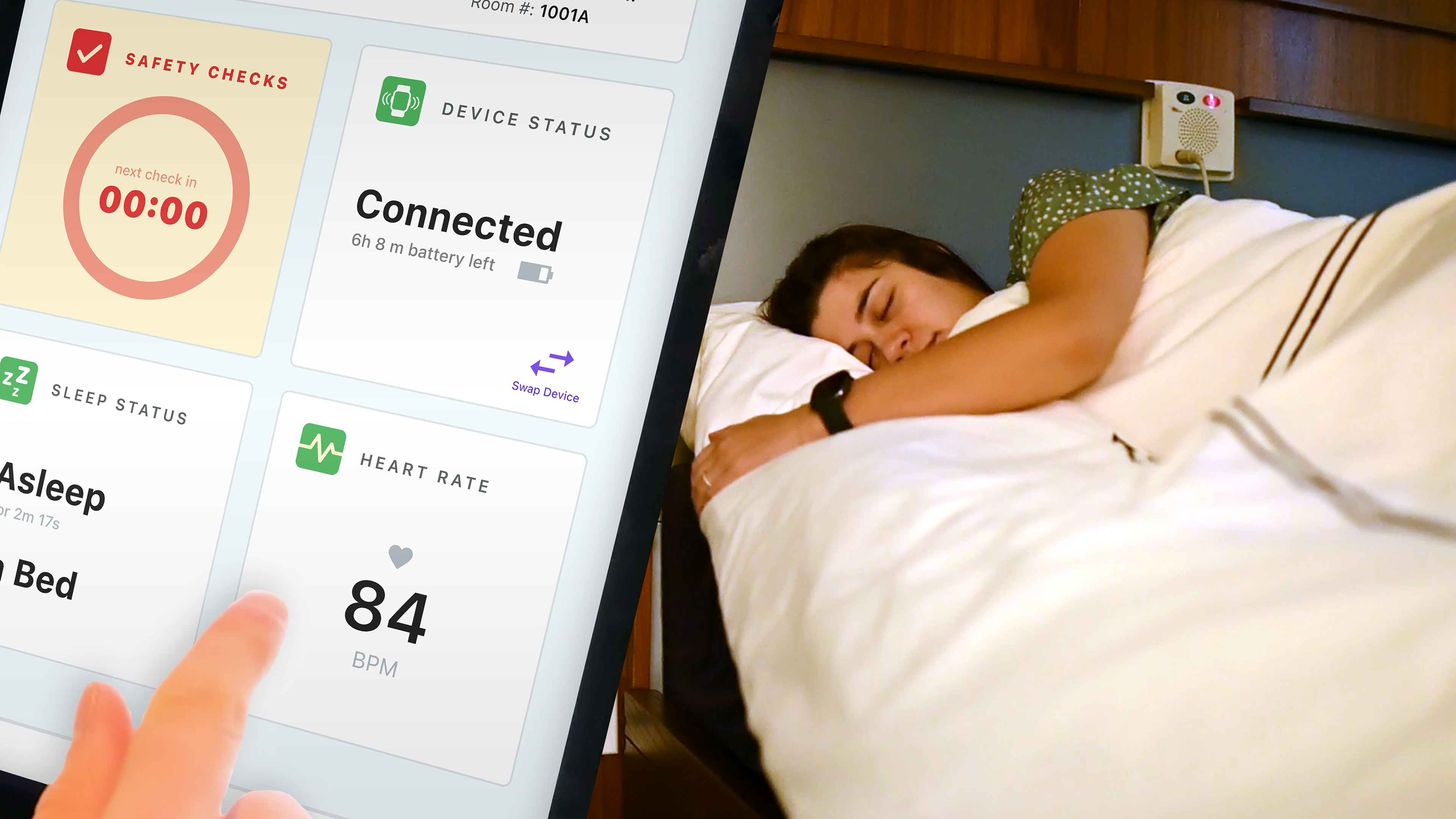
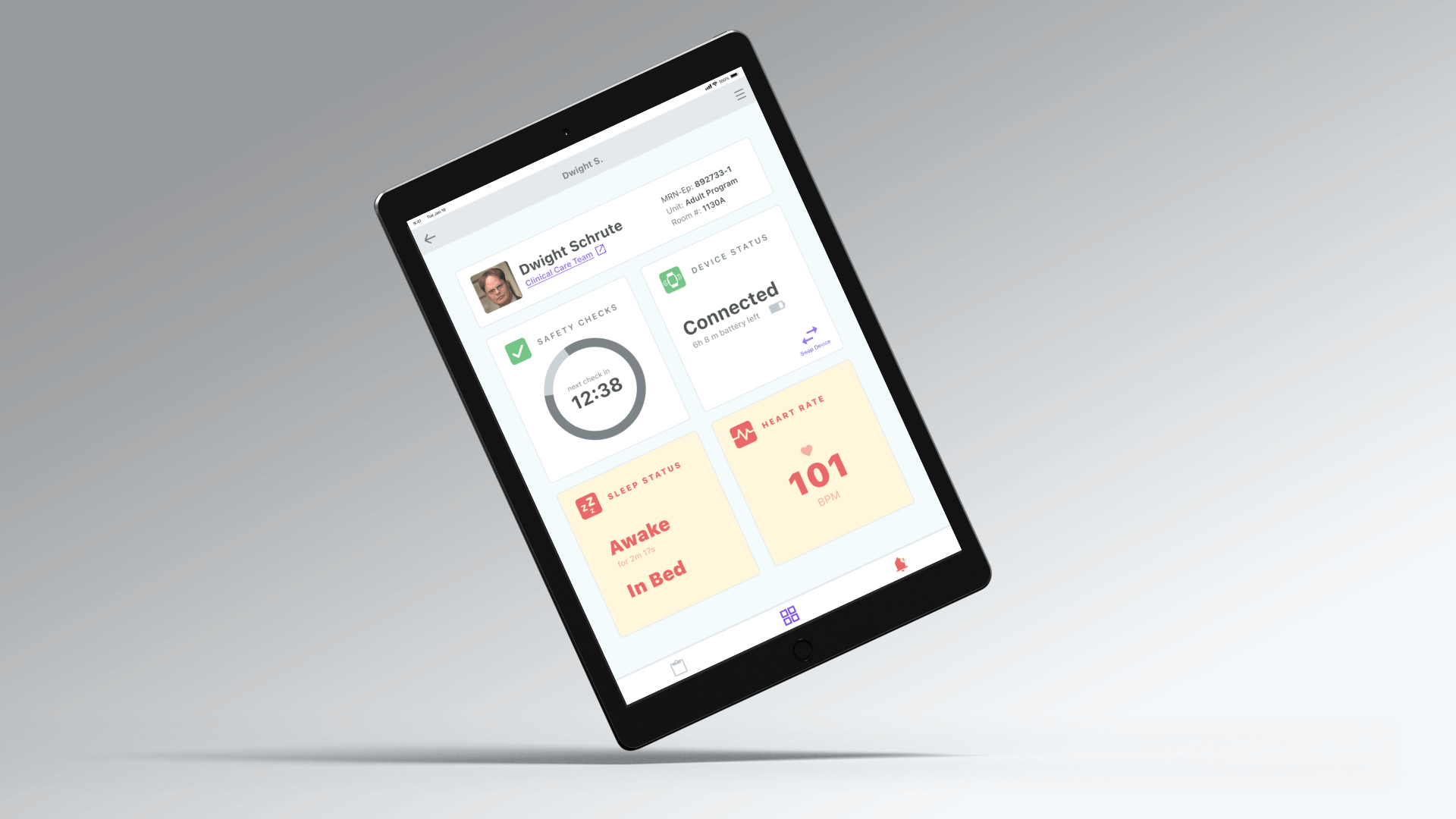
MORE ABOUT THE NIGHTINGALE SLEEP PROJECT